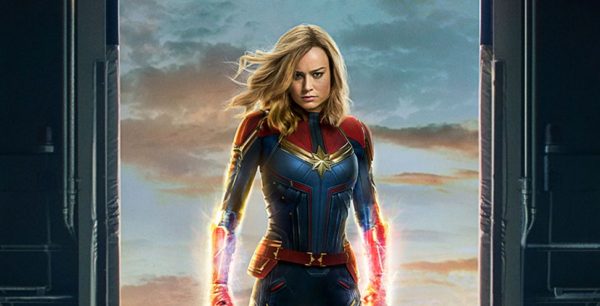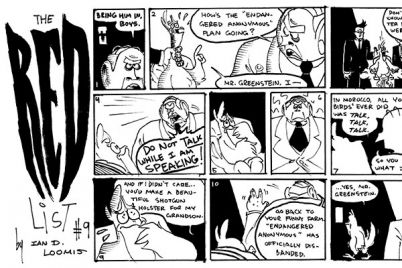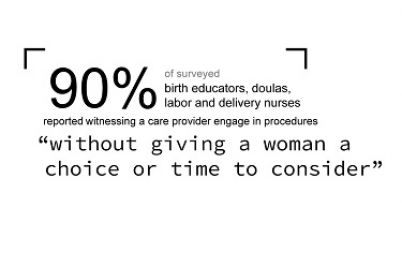
The character and costume design in “Captain Marvel” (2019) challenge the usual stereotypes surrounding female superheroes. Photo courtesy of IMDB
By Catherine Engstrom-Hadley
Staff Writer
Superheroes have evolved (or mutated) since I was a girl, and “Captain Marvel” shows us what happens when we allow female characters to be powerful without constraints.
Growing up in the `90s, my favorite comic book character was Jean Grey. She was one of the most powerful characters in the X-Men universe, however, she constantly struggled to control her power. In her 2019 title film, Captain Marvel stops fighting with one arm tied behind her back, and maybe it’s time more female characters do, too.
The film introduces audiences to Carol Danvers, who is initially referred to as Vers and later transforms into Captain Marvel (Brie Larson), a powerful warrior missing seven years of memory and working under Yon-Rogg (Jude Law) for the Starforce. Their team travels the cosmos fight the evil shapeshifters called the Skrulls. They get sent to hunt for a spy and Danvers finds the Skrull trying to access her memories. Her memories, now unlocked by the Skulls, send her to C-53, or Earth, where Vers meets Nick Fury (Samuel L. Jackson) and Phil Coulsn (Clark Gregg). Vers joins forces with Fury to try to find what the Skrulls were looking for and what her connection to C-53 is in the first place.
The movie is Marvel’s 21st film in the “Marvel Cinematic Universe,” but the first with a female headliner. The film made $455 million worldwide in its first weekend, making it the seventh highest opening weekend earner of all Marvel films.
Female leads have fought an uphill casting battle in the Marvel Universe. Former CEO of Marvel, Isaack Perlmuter, even sent emails of his distaste for female superheroes, saying female superhero movies are disasters.
Costume evolution
A look at the costumes of superhero women shows small amounts of growth over time.
Black Widow’s comic book costume was hailed as a step in the right direction, according to Ingrid Marie Fretheim in her thesis “Fantastic Feminism: Female characters in superhero comic books.”
“Black Widow’s sexy costume defined her independent way of life and reflected the new freedom that women were seeking in the `70s,” Fretheim said. “Black Widow was unquestionably sexy, but, as with everything else in her life, it was on her terms.”
From “Iron Man 2” to “Avengers: Infinity War,” Black Widow’s character remains a strong and powerful fighter.
The costume for “Woman Woman” (2017) remained true to the original comic book conception, too, with a short skirt and a fitted bustier.
With both these characters, we see an almost impossible image of what a fighter would look like. With these heroines are accomplishing amazing feats of ability and strength, a layer of believability is removed when they do so in a mini skirt.
“There is a gap between what women are expected to do, and how they are expected to look while doing this, and it is clearly visible in the world of the superhero where everything is a little more extreme,” said Fretheim.
In “Captain Marvel,” Danvers’ film outfit and posing stands out compared to other superheroes of whom she fights alongside in the Marvel Universe, and in other comic universes like DC. Her stance is less feminine and her outfit more battle ready, compared to those of some of her companions.
This is not to say expressions of femininity and sexuality are bad or anti-feminist—on the contrary, both these expressions can be empowering for many women. However, superwomen have long been oversexualized and trivialized through costume design, poor character design and stereotyping. When any female character is stripped of autonomy and multi-dimension, these expressions stop being empowering and turn into objectification.
Danvers’ character is unique because she is powerful without permission. At a point in the movie, we see a montage of the Captain being knocked down over and over again, and getting up each time. No one needed to believe in her but herself; the movie isn’t about finding acceptance, but breaking chains and discovering self without repression.
There is a part in the film where the hero is fighting with a villain and he challenges her to fight him without her powers. She refuses and says, “I have nothing to prove to you.” And she doesn’t. This is possibly the best line in the film.
Representation in film
Representation in movies like these does matter for young girls. Ninety percent of girls surveyed in the 2018 “SuperPowering Girls” study said female sci-fi/superheroes are positive role models to them, and 68 percent of girls of color surveyed said female superheroes made them feel they could achieve anything they put their mind to. With 65 percent saying they would like more female superheroes to watch and read, it’s clear that girls are paying attention.
In Hollywood, we tend to see more men than women, especially in writer and director roles. However, that trend may be changing. “Captain Marvel” was directed by Anna Boden and Ryan Fleck and written by almost all women. More and more women now write and direct movies with female leads, as well as more black people writing black characters, as seen in “Black Panther” (2018). When women and marginalized groups get power to write their stories, everyone wins. Deeper, richer and more fantastic characters are born or reinvented.
“Captain Marvel” was just a drop in the bucket of what could be. She doesn’t have to prove anything to anyone, she doesn’t need a white knight to save her and she doesn’t have to sacrifice it all just to win.
Captain Marvel’s character is awesome because she’s written by people who truly believe she can be awesome. The success of “Captain Marvel” will hopefully continue to expand the universe of female superhero characters and take them “higher, further, faster.”


